“Tambase Kairen Sungmami, Hyangla Jamey Busingda,
Chhangra Maangra Mokkon Chaajinji, Nhugi Kutumbala Jimmari,
Hyang Tamangla Rimthimari“
“The Tamba speaks of history, Hereafter our daughter,
Her rituals are all done, the onus upon the Patriclan now,
Says all Tamang customs“
–Tamba la Hwai (Tamba’s Song)
Marriage customs and rituals have passed through a long progression of cultural evolution among many tribes in the Himalayas. Even with group affiliations and individual choices, marriage customs, with a few exceptions, employ age-old conventions across various communities, including the Tamangs. Many time-honored customs and rituals attached to the wedding system exist in traditional Tamang culture. Regardless of urban influences, in the rural regions, these rituals, sometimes strange to an outsider, are still integral parts of a mosaic of traditions associated with the Tamang community. Tamang marriage rituals are relevant even in modern times and continue to shape their society, individuals, and cultural narratives.
The conventional model of patrilineal descent and its sociological norms still govern the societal system of Tamang relations. A Tamang woman must leave her natal family and settle down with her husband’s family when she marries. Traditional Tamang marriages (Brelsaang) occurred between cross-cousins, thereby convoluting the distance between natal and marital families. In a system of such convention, that produces various possible elementary structures of kin in society, the generic terms Maiti (Wife Givers/Natal) and Kutumba (Patriclan), and their meanings, though maintained in Tamang parlance, bears an intricate structure that forges new ties between extended material kin.

Tamang society, for the most part, is patrilineal. Descent is traced through the father’s lineage, although cultural values are motivated by matrifocal endeavors. Affinity towards the tribe plays a significant role while conveying the social definitions of marriage in general and identity in particular, as the bride keeps her surname even after marriage. This means that the affinity of a daughter towards her surname or clan (Rui/Hui) remains unchanged. Therefore, marriage, due to the collective character of both genders, is seen as a shared experience, influenced by individuals and patriclan sections, rather than merely being an individual affair. It becomes a medium that helps bolster affinal relationships. Of course, such a powerful and socially embedded inter-tribe construct also presents complex marriage negotiations.
Eloping and mock capture, separately, are familiar concepts of marriage in rural Tamang societies. While endogamous marriage is always the norm, arranged marriages (Maagi Biha) are the only proper amicable system of marriage involving cross-cousins. Maagi Biha also has the consent of the parents. Nevertheless, eloping and mock captures are not unprecedented traditions. Bride capture may have once been a tradition but is not practiced in totality anymore. Mock capture, colloquially referred to as Chori Biha, occurs as a part of the marriage ritual in an endogamous marriage arrangement.
Capture is symbolic today, where the bridegroom or his friends should go through the form of feigning to steal the bride or carry her off from her friends by superior force. Although the marriage has consent, theft or abduction that follows has a concerted matter of form, to make the marriage valid. Real capture would mean actual abduction but ritual capture also means obstructing the allowance of the groom to capture the bride to allow for negotiations upon the fulfillment of particular demands by the bride’s family.
Once mock capture has been accomplished, and the bride begins her life with her groom, the particlan sends a wooden container filled with alcohol to the father of the bride, as a request for negotiation. The container, sent through the mediator/negotiator (Ganba/Tamba), is called Thegaan Pong. Thegaan Pong symbolizes promise and honor, in Tamang traditions (Rimthim). Alcohol containers are called Pong and often reflect Tamang cultural perceptions of the role of alcohol in rituals. Tamang culture has an established heritage of traditional practices, and the enactment of such, according to situational appropriateness may involve complex and subtle dissimilarities. However, the rules governing the use of alcohol and its containers are always rigidly observed. The mediator, and the Pong, must reach the house of the bride within five days of the capture.

Tamang marriages must follow reciprocal obligations between the bride’s and groom’s clans on both sides. While all rituals of negotiation may sometimes not always be achieved in totality, all marriages ultimately follow the traditional protocols of negotiated exchange. The ideal roles and functions of kin on both sides are equal, to some extent, and have their ways of initiating the union, but if actual experiences of marriage negotiation are scrutinized, they all begin with a formal request by a party representing the groom. Subsequent reciprocity of dialogues and material gifts enter the marriage into a framework of traditional legitimacy that ultimately will also validate the offspring from the couple.
At the bride’s home, the mediator and his assistant offer three Pongs of alcohol to the woman of the house. Rejection is usually rare but it is up to the bride’s family to accept or decline the Pong. Upon acceptance, formal marriage rites will occur. During the wedding, the groom’s mediator, with containers of alcohol and other gifts, engages in an elaborate meandering dialogue, informing the bride’s kin about the groom’s assets and genealogy. These gifts, at the outset, might look like bride purchase, practiced in ancient times, but is today considered Riti Danda, or bride penalty. In standard Tamang traditions, such payment is simply a matter of custom, ‘an affair of manners rather than morals.’
Exchanges are often an emotive issue and serve as a customary introduction between kin on both sides. During the wedding feast, witnessed by the village and clan members, the groom gives pieces of fabric and money, to the bride. These symbolize the promise of the groom to become a lifelong provider. Due to the powerful and socially embedded system of reciprocity, material gifts are exchanged as the groom offers money and alcohol to the bride’s mother, and she hands him a white turban-a symbol of honor.

As the wedding ritual progresses and the bride’s natal kin (Maiti) gives her away to the groom’s patriclan (Kutumba), four different kinds of witnesses must be deemed present and duly honored.
- The omnipresent divine spirits
- A Rooster to represent the Himalayan Monal and the Peacock of the plains
- Fish, to represent the holy waters
- All the guests present to witness the wedding
These witnesses are called Chhongkhor or Chaardam and serve as reminders that the markers of a legitimate marriage also require the blessings of all realms, physical and spiritual.
After the solemn union between the bride and the groom, both clans will impart money and blessings. While both clans, to some measure, perceive each other as equals, during the ritual, the bride’s natal kin stand in a principal position as they become ‘wife-givers’. For the Tamang people, the clan holds enormous importance, and marital choices do not always pertain to individuals. Decisions should be made in the larger interest of the clan. Therefore, Tamangs place enormous emphasis on arranged marriages, although gradual erosion of traditional marriage systems in favor of individual choices, sometimes exogamous, has been observed in the Tamang community presently.
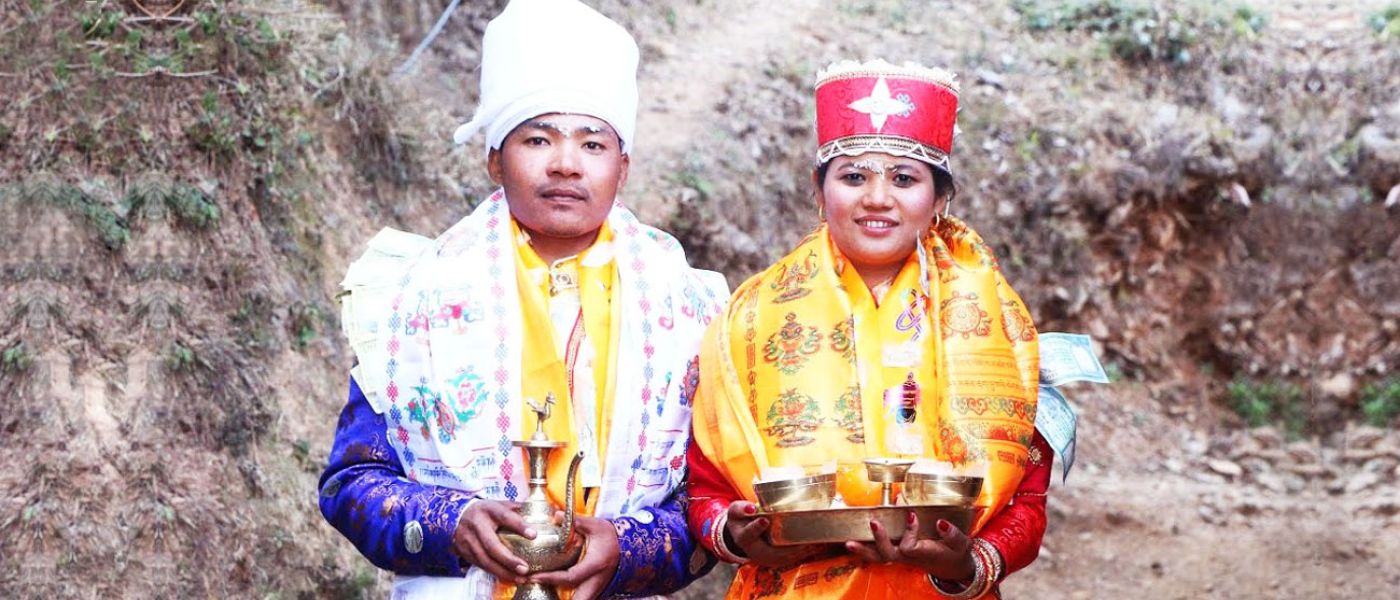
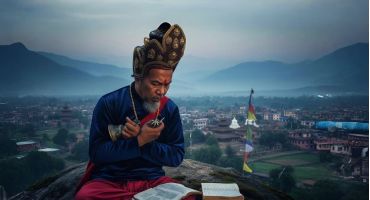
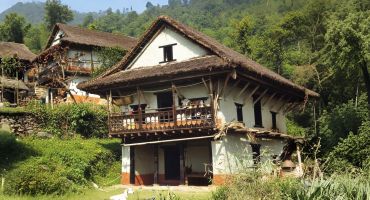
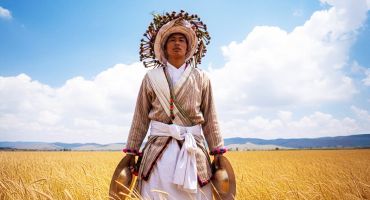
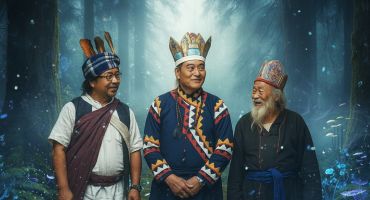
Leave a Reply